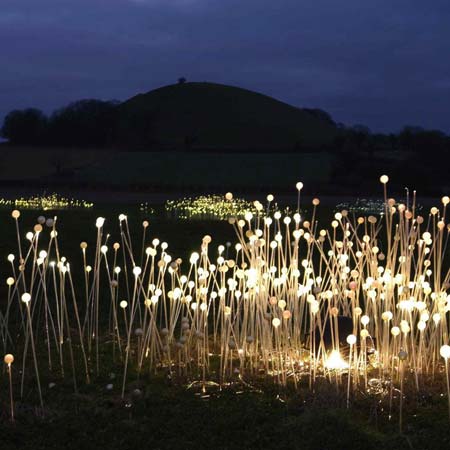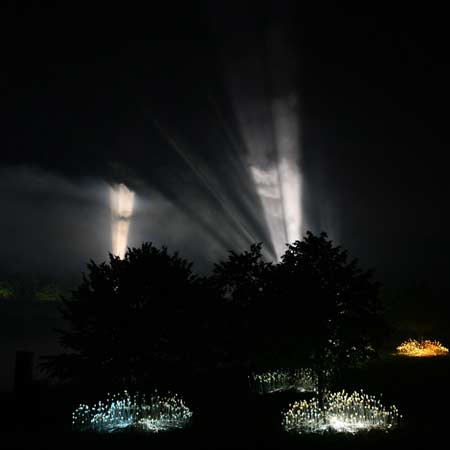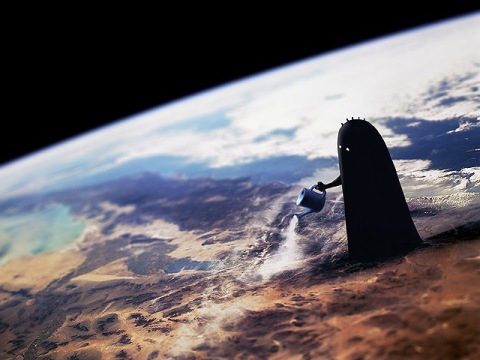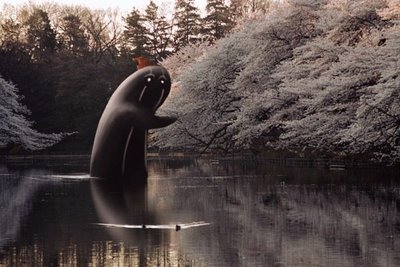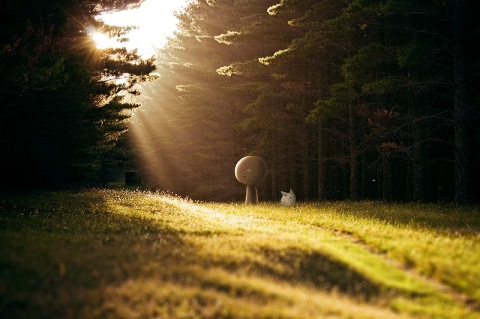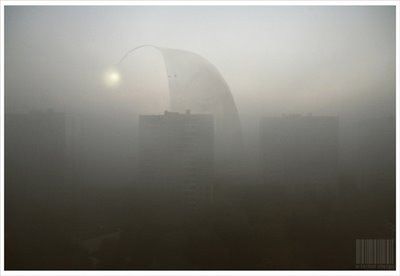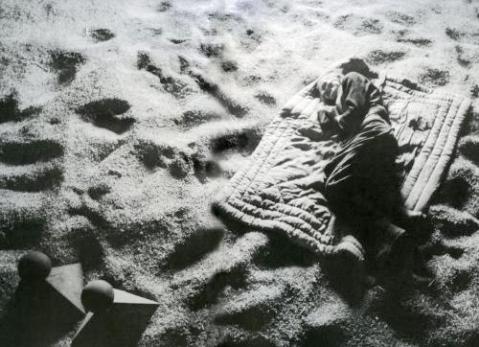Free Encouragment
April 12, 2009
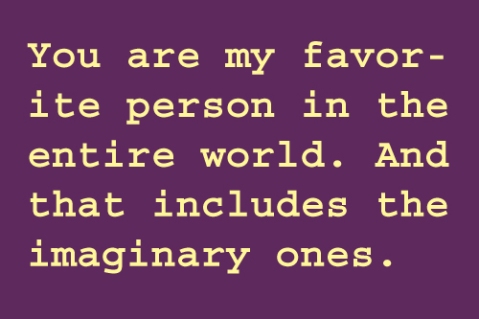
BOOOOOOOM and Design for Mankind have joined forces in the wonderful Project #5: Free Encouragment.
They asked people to submit short personal sentences of encouragment for people they know and created a whole gallery of them for part one of the project.
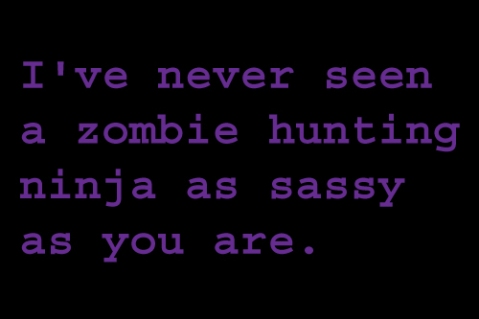
Because “There is just so much negativity all around us these days, have you noticed? It’s infesting the internet, it’s taking over the big screen, it’s cutting you off, it’s showing up on your bank statement, it’s staining your new shirt, it’s breathing down your neck, it’s not giving you a vacation, it’s talking behind your back, it’s stuffing you in a locker, it’s cheating on you, it’s charging you more, it’s giving you less, and it’s making you miserable!”
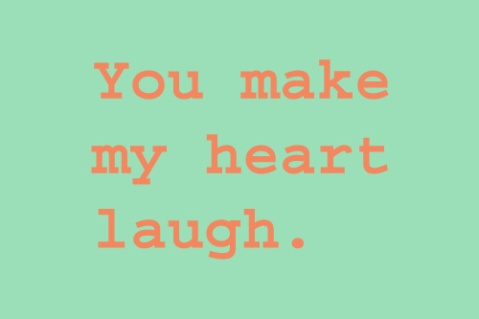
Go and read all of them. They will give you a wonderful feeling and yes, much encouragment. Even if they were not meant directly for you. I think it´s a wonderful project with really awesome contributions. Very inspiring.
The second part which was hosted at the Design for Mankind site asked artists and designers to make postcards out of their favourite encouragment and submit them. Apperantly they made two postcard sets from them which are available at etsy. Sadly there is no gallery of the 400+ submissions online (at least i couldn´t find it) so you might have to click through the etsy site to see a few of them.
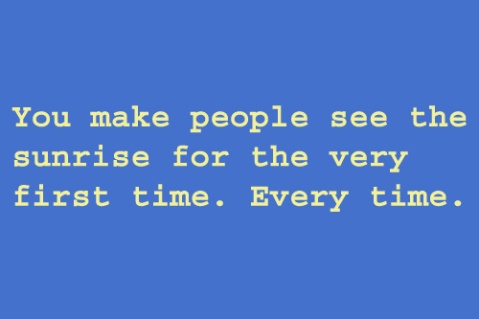
Because of that and because i think the stark graphics are much more powerful than pretty postcards i probably like the first part more 🙂 A truely awesome project.
Mr Woo´s robots
March 8, 2009
A while a ago i stumbled over the story of the amazing Mr Woo of China. He reminded me of Franz Gsellmann, who i wrote about in an earlier post.
Mr Woo has no formal training at all, but builds amazing robots out of scrap materials. They are all called Woo after him and numbered (Woo1, Woo2 etc). There is a robotic dog, a tea pouring robot and Woo22 the newest model, can pull Mr Woos rickshaw to the market.
Those robots are really an incredible accomplishment. Especially considering the conditions and difficult of the robots. I remember an article a while ago which talked about how to design walking robots was one of the most difficult parts of robot-making.
Field of light
March 8, 2009
There are so many really nice light sculptures/art installations out already, but Lighting designer Bruce Munro shows that there are never enough. And that they keep getting even more beautiful.
Munro´s famous Field of Light (an apppropriate name) will be shown at the Eden Project in Cornwall, England, this winter. It was inspired by the way the desert flowers after a rainstorm.
“Munro was transfixed by the way the red desert was barren until it rained and then, as if from nowhere, dormant seeds would burst into bloom. He made a series of sketches in the notebook carried in his pocket since art college days, and the idea refused to dislodge from his mind.
Field of Light, like a giant surreal camp-side banana, is an alien installation in the midst of nature. And like dry desert seeds lying in wait for the rain, the sculpture’s fibre optic stems lie dormant until darkness falls, and then under a blazing blanket of stars they flower with gentle rhythms of light. ‘Field of Light’ is about the desert as much as the roadside campsites – and like much of Munro’s work is characterised by an almost mystical passion for nature teamed with a robust sense of humour.”
via Dezeen.
Magical worlds
December 13, 2008
Beautiful illustrations/photoshops by a russian designer/artist. I have no idea what his name is actually, but you can find his blog (in russian but with many many more images) at Tebe Interesno.
His magical creatures look so real… and still like snapshots out of a fairytale.
Sorted Books
December 8, 2008
Another example of transforming books: The wonderful Sorted Books project by the California-born artist Nina Katchadourian.
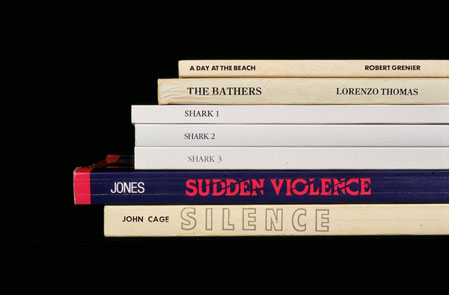
It ” has taken place in many different places over the years, ranging form private homes to specialized public book collections. The process is the same in every case: culling through a collection of books, pulling particular titles, and eventually grouping the books into clusters so that the titles can be read in sequence, from top to bottom. The final results are shown either as photographs of the book clusters or as the actual stacks themselves, shown on the shelves of the library they were drawn from. Taken as a whole, the clusters from each sorting aim to examine that particular library’s focus, idiosyncrasies, and inconsistencies — a cross-section of that library’s holdings.”
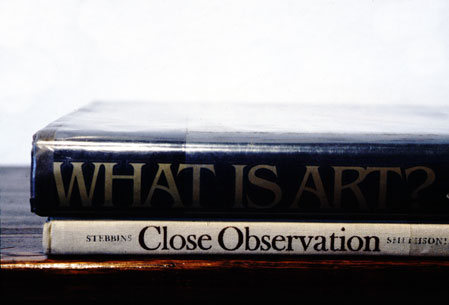
What a creative idea!
Also check out her Map projects. Actually look through her whole website, all her works are very unique and interesting and showcase her extreme creativity. For example the story of Chloe (under the Confused Animals) or the Mended spiderwebs (featured here before) or Finlnds unnamed islands.
Die Weltenmaschine – worlds maschine
November 12, 2008
I found the most wonderful story today and just had to share it (even if it´s kind of long).
Franz Gsellmann, an austrian farmer was born in 1910, as a child he wanted to be an electrician but his father didn´t allow him to start an apprenticeship so he became a farmer. But for all his life he remained fascinated by moving objects, the mechanical interaction of modern machines. He dreamed of building a machine but lacked a characteristic element for the construction of his machine. Until he saw the Atomium of the 1958 Brussels world fair in his local newspaper. The farmer boarded the train and went to brussels. The journey to three days but was worth it: Gsellmann had found the heart of his machine. He went home and started working.
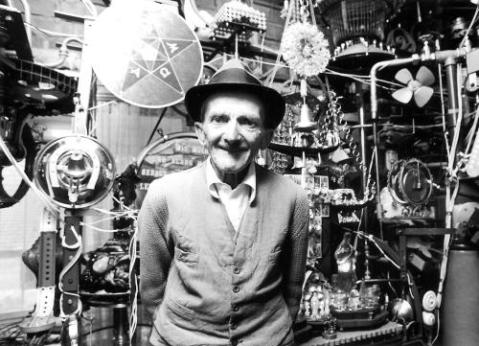
For the next 23 years he worked on his wondrous machine and never during all his life told what purpose or meaning his machine was supposed to have. He went to Graz, Vienna and many fleamarkets all over on a bike to find objects and small treasures for his machine, among them a small dutch windmill, an eagle made from china, 5 crosses, seven generators and 200 lightbulbs. No one was allowed into the room where he build his machine, not even his wife.
In his village nobody understood him and they ridiculed him. Often he would go to the attic when the mocking grew too much to handle; there he would mourn and cry himself to sleep.
But in the night of 1968 as all lights went off in his tiny village, the people there knew: Gsellmann did it. In that night he turned on his machine. 12 switches were needed. Then green, red and blue wheels started to turn, hundreds of tiny lamps started blinking , it was creaking and humming and squealing. The whole thing is 6 meters long, 3 meters high and 2 meters wide. In its middle a tiny Atomium is rotating and a glass Holy-Mary statue is shining with tiny lightbulbs surrounding it like a rose wreath.
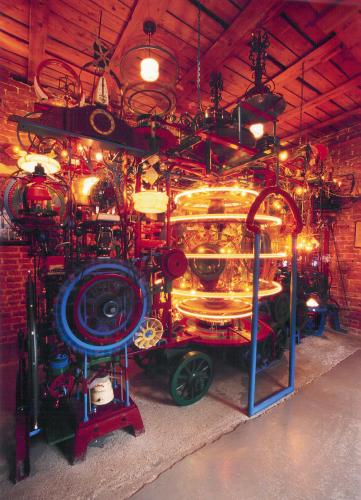
And nobody knows what it is.
“When a human is gifted, it´s like an inner drive. It´s like in spring when a rosebush starts growing tiny buds, and in may,june the roses are there. like this it drives me year after year.” Franz Gsellmann, builder of the worlds-maschine.
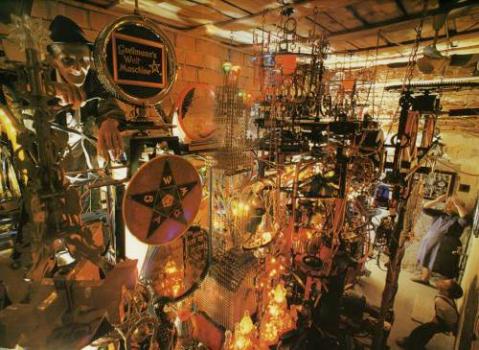
Over time his magical machine began to drew visitors. Legend has it that even the artist Jean Tinguely, who builds kinetic sculptures and has his art displayed at the MoMa and the Tate, traveled to the farm to see the machine.
Gsellmann kept perfecting his machine until his death. The family claims that one day after he went to his wife to tell her his machine was finished, he simply went to bed and died.
It´s such a beautiful (and kind of sad) story and my translation doesn´t really does it justice. I really hope that Mr. Gsellmann was satisfied with his machine and that it turned out how he wanted it too. And that he is watching from heaven now, seeing people take enjoyment in his machine and that they are in awe of his accomplishment and dedication.
Here is a beautiful article about Gsellmann and his miracle machine (in german).
And the website of the museum at his house where the machine still stands (in german).
There is also a book about him on amazon (in german): Der Weltenmaschinenroman.
(Apperantly) yes you can.
November 5, 2008
And did.
The illustrator Patrick Moberg sums it up eloquently:
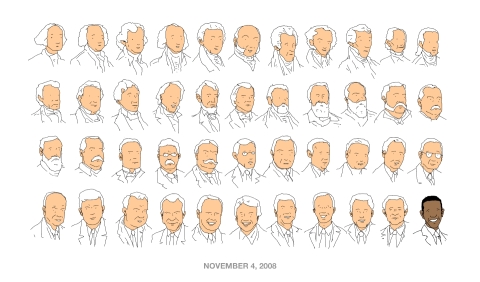
The obama campaign inspired millions of people to vote and they also inspired milions of artists to share their vision of Hope (or in this case Obama). The list is endless, here are just a few examples/links.
There is of course the famous poster by Shepard Fairey.

Or the website Design for Obama, with many amazing posters to date.


And of course not to forget Will.I.Am´s song Yes we can.
And the campaign itself was pobably the best designed ever. Here is a neat post by london graphic designer Ben Terrett with a collection of some nice articles which analyze this phenomenom. Among it a great photo gallery by the Guardian, 30 graphic designers giving 30 reasons for voting Obama and this great article< at Speak up.
They branded his posters, pins, stickers, plane, bus…and even christmas ornaments…the variations are endless.
Ah, and the typography! Gotham. *Sigh*
Here is a good article by the Boston Globe about this particular phenomenon of the phenomenon.
Where the hell is Matt?
June 28, 2008
Very moving video.
(Despite the titel :D)
A higher resolution video can be found here.
Matt “a 31-year-old deadbeat from Connecticut” has now travelled around the world to over 55 countries….and danced. Badly, according to him.
After posting the first video of a dance online,a gum company found him and told him they liked it. So they sent him around the world again to make another one. And another one. And appearantly his “bad” dancing inspired lots of people to join him.
Read more about Matt, his amazing travels and see more of his videos on his website.
Our wishes
May 25, 2008
A lot of the famous artists today (especially installation artists and of course architects) need hundreds of thousands of euros and years of time to complete their “vision”. But sometimes you just need a mother with an idea and it turns into a message to the world 🙂
The result Our wishes by Liisa Sinikka Ogburn (or more specifically the children of the first grade class at JY Joyner Elementary in Raleigh, NC).
“For the last two years, I have volunteered in my son’s kindergarden and first grade classes at JY Joyner Elementary in Raleigh, NC. I have watched as he and his classmates have painstakingly learned how to write their names and then write increasingly more complex ideas. Repeatedly, I have been struck by their openness and honesty. To try to capture that, I visited and, with their teachers’ help, asked students “If you had one wish for the world, your family or yourself, what would it be?” I distributed card stock and black pens and asked them to write their answers big so that we could all read their wise words. The teachers helped with spelling. I then tacked a black cloth to the classroom wall, set a stool in front of it and asked each child to hold their sign as I photographed them. I told them they could look at the camera in whatever way they felt.”
You can buy a poster of the project throught her website. All funds raised will benefit the school’s cultural arts program.
Racetrack Playa
May 18, 2008
I first tried to find some way to relate this post to art or design, but in the end i decided it is so fascinating in itself that the only connection you need is the inspiration it gives you, the curiousity it arouses and the fascination of the wonders of our world.
Racetrack Playa (national park of Death Valley, California) is famous for its moving stones. The floor of the playa (an ancient lake) is dried, scorched mud which has broken into perfect little octagons and pentagons. It’s as flat as flat can be. And there are roaming rocks which seem to move on their own. The stones vary from pebble size to half ton boulders and vary in size and shape. Their tracks vary in length and go every which way from zig-zags to loops and double back on themselves. Some travel only a few feet; others go for hundreds of yards.
No one has ever actually seen a stone move. And no one apperantly can figure out HOW they move. And where they go when they reach the end of the lake.
Fascinating.
Here are some articles about it:
The dancing rocks of racetrack playa.
The moving stones of California.
